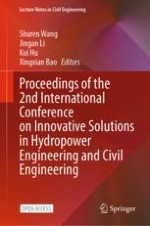1 Introduction
2 Test Raw Materials and Forming Methods
3 Effect of Single Doped Nano Silicon on Cement Slurry and Pervious Concrete
3.1 Effect of Nano-Silicon on Water Consumption of Standard Consistency of Cement Paste
Serial number | Cement/g | Nano silicon/% | Water consumption/g | Water-binder ratio |
|---|---|---|---|---|
1 | 500 | 0 | 129.6 | 0.26 |
2 | 497.5 | 0.5 | 141.6 | 0.28 |
3 | 495 | 1 | 154.6 | 0.31 |
4 | 492.5 | 1.5 | 167.5 | 0.34 |
5 | 485 | 3 | 191.5 | 0.38 |
